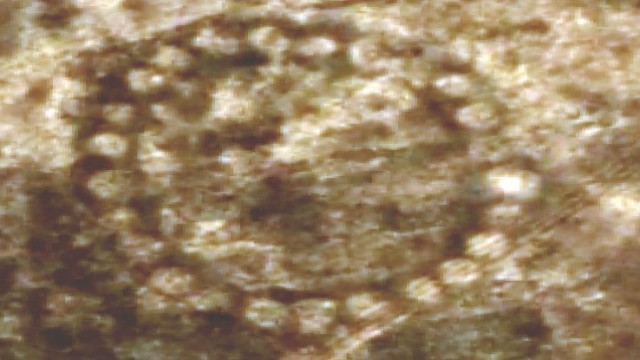Do you know about these?
There have been many famous archaeological mysteries that have been debated in terms of how they were made, from Stonehenge to Egyptian structures and the like. Apparently there are some structures in Kazakhstan that no one can explain:
Back in 2007, a series of huge, mysterious geoglyphs were discovered in the grasslands, or steppes, of Kazakhstan. Formed by human-made mounds, divots, and trenches, the structures create giant images that can be seen from the sky, including shapes that look like crop circles, squares, and swastikas. Archaeologists estimate they were created around 8,000 years ago, but have no idea who built them, or why.
Mostly historians have assumed that populations that existed 8,000 years ago would be incapable of making such structures:
Now NASA has taken the first photos of the Steppe Geoglyphs from space, and has admitted that its scientists are no closer to solving the mystery. But they’re going to keep investigating, because the answer could reshape our understanding of early humanity.
“The idea that foragers could amass the numbers of people necessary to undertake large-scale projects – like creating the Kazakhstan geoglyphs – has caused archaeologists to deeply rethink the nature and timing of sophisticated large-scale human organisation as one that predates settled and civilised societies,” Persis B. Clarkson, an archaeologist at the University of Winnipeg, told Ralph Blumenthal from The New York Times.
These new pics are definitely making some historians rethink what they thought to be true about the people who inhabited that region.
And in this related video NASA gives a lecture from last year on the state of affairs in regards to the search for aliens and extraterrestrial life.
During a televised panel discussion of leading science and engineering experts at NASA Headquarters on Monday, July 14, a scientific and technological roadmap to lead to the discovery of potentially habitable worlds among the stars was addressed. The agency’s next step, the James Webb Space Telescope (Webb telescope), was featured as a new tool that will continue to help scientists rewrite scientific textbooks long after its scheduled launch in 2018.


I did
I did, I made them
Not sure why nasa would know anyway. .. but….. ok….
Once again I say this….why do we need NASA or news organizations to confirm what our own eyes and ears see and hear already?Don’t we trust our own knowledge and understanding and sences anymore? Have some faith people in yourselves.
Birth control?
Why would NASA? Maybe ask an anthropologist?
if fascinating of how much we know about Earth, yet we are still discovering more.
No we are not alone!